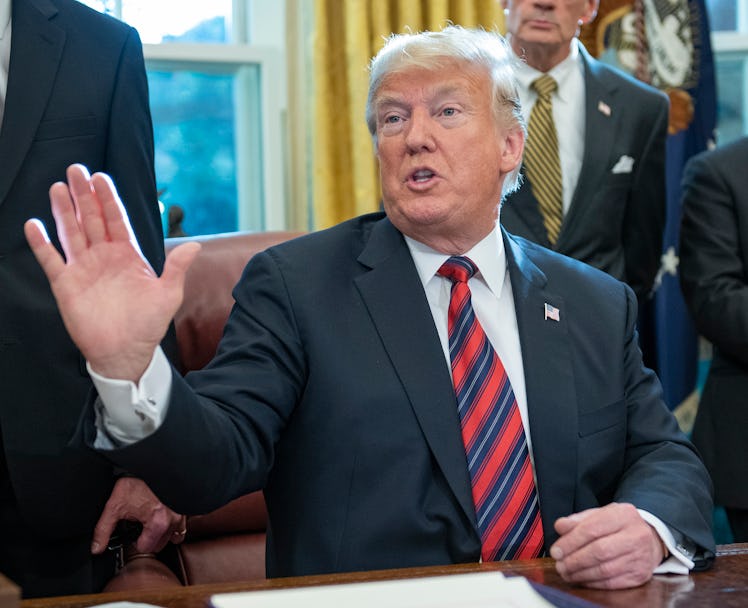
Democrats Have A Proposal To End The Government Shutdown — Without A Wall
As 2018 comes to a close, Monday, Dec. 31 also marks the 10th day of the partial federal government shutdown, the result of a stalemate in Washington over President Donald Trump's demands for $5 billion in funding for a wall at the U.S.-Mexico border. The shutdown is affecting a handful of federal departments and agencies, including the Department of Homeland Security (DHS), central to Trump's key border demands. So as Congress returns to the capital later this week, everyone is wondering when the government shutdown will end? House Democrats apparently have a plan to move forward on funding the government without incorporating Trump's wall requests.
Democrats will take over power in the House of Representatives on Jan. 3 when the new Congress convenes. Per The New York Times, the House Democrats' plan will include six spending bills to fund the government through the end of fiscal year 2019, which concludes in October, as well as a short-term funding bill (also known as a stopgap measure) to fund the DHS through Feb. 8 while talks on this point are ongoing. Earlier this month Congress passed a series of similar spending bills to fund six other departments, so that essential services would not be curtailed should such a shutdown take place.
Specific to the deal-breaker demand by Trump, the plan reportedly includes offering the existing agreed-upon level of $1.3 billion in funding border security, encompassing projects to protect the border that include measures such as fencing but not specifically a wall. It's unlikely that this provision, however, will satisfy the Senate and the president, who must both sign off on the plan for it to go into effect.
On this note, the House's new proposal doesn't necessarily mean the shutdown is likely to end anytime soon. The president is holding steady to his demands, and as the Times reports, Senate Republicans, who still control that chamber, are unlikely to buck the president's wishes and sign off on any House plan that doesn't include his demand of funding for a border wall. "It's simple ... The Senate is not going to send something to the president that he won't sign," Don Stewart, a spokesperson for Senate Majority Leader Mitch McConnell told the Times. As of Dec. 31, per Bloomberg, the president is continuing to stick by his original funding demand.
Fellow Senator Richard Shelby didn't seem too optimistic about the fate of the shutdown, either. Speaking on CBS' Face The Nation on Sunday, Shelby said, "Our negotiations are at an impasse at the moment," and added, "Right now, we're at a standoff ... If we blame each other this could last a long, long time."
In recent days, both the demand for the funding and the president's definition of the wall itself has taken on different iterations, with Trump referring to "steel slats" in a Dec. 21 address from the Oval Office on the day of the funding deadline.
In an L.A. Times interview with outgoing Chief of Staff John Kelly, the president's former employee said that the idea of having a more solid concrete barrier was scrapped a long time ago, around the start of the presidency; in fact, it's reportedly since been understood within the administration that the "wall" would be really more of a fence. The White House did not immediately respond to Elite Daily's request for comment on the subejct. But Trump, in a series of tweets over the Christmas holiday week, reverted back to calling it a "Wall."
Trump, in remarks to reporters on Christmas Day, claimed that he had the blessing of federal government employees to continue on with the shutdown and hold out for the funding. But in recent days, polls and unions representing the affected workers have contradicted that account, while other reports have detailed how the partial shutdown has affected workers' financial situations. The White House did not respond to Elite Daily's request for comment on the claim.
Whatever it ends up being — a wall or a fence or a symbolic tightening of border policies — it looks like there's no plan for Democrats, as of now anyways, to give Trump the $5 billion he's asking for. And by extension, it's not any clearer how soon the shutdown will end as a result of the negotiations impasse.